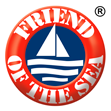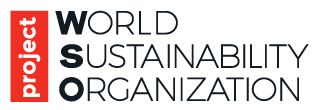Sustainable Mackerel certified fisheries (Herring, Sprat, Menhaden)
Delimar S.A
Species scientific name: Scomber colias
FAO area: 34
Fishing method: Purse seine
Basic description of the fleet/fishery
Fishery client: DELIMAR S.A.
Fishing area: FAO 34.1.1
Fishing vessels: The Company has a fleet of 27 vessels.
Vessels audited on site as fleet samples: 11-221; 10-112; 6/1 234; 7/1 165; 6/1 124; 8-977.
Fishing method: Purse seine.
Certified species: Scientific name: Scomber colias;
Common name: Mackerel.
Management summary
The National Office of Fisheries (ONP) is a Moroccan public institution that, under the auspices of the Ministry of Agriculture, Rural Development and Maritime Fisheries (MADRPM), is assigned with task to undertake strategies for the fisheries sector development. The Department of Marine Fisheries (DPM) controls the vessels in relation at security, people on board, gears and license, while ONP controls unloading, sizes and quantities. The National Institute of fisheries research (Institut National de Recherche Halieutique: INRH) monitors the resources of small pelagics. Since 2015, there is a management plan for small pelagics. The project is planned to last until 2020. The Moroccan fisheries management plan is reviewed annually in agreement with the board of the Fishery Committee for the Eastern Central Atlantic (CECAF).
Stock status summary
In 2014, small pelagic biomass represented the average of the last 15 years. In 2016, the reported production of mackerel in the Moroccan zone was 305,759 tonnes, representing 21% of the catches. Most of the small pelagic catches are made in the Southern area (Cape Bojdor – Cap Blanc), with mackerel representing 25% (206,015 tonnes) of the catches. In the Central area, mackerel represents 14% of the catches. The minimum legal size of mackerel is 20–21 mm.
Bycatch / discards
The fishing method used allows accidental catches to remain alive. A sonar system is in place to locate the schools and avoid non-target species. All vessels are obliged to declare all the catch (quantities and species), under the supervision of the agents of the ONP. The reported accidental catch species are not included in the IUCN Red List. The Moroccan authority allows an amount of 3% of bycatch, except for Boops boops that has an allowed rate set at 10%.
Habitat Impact
All vessels are monitored in real time by the competent authority through the vessel monitoring system (VMS). Fisheries occur outside of Marine Protected Areas, respecting the authorized distance from the shore (3 miles). Purse seine fishing has no impact on the seabed.
Social Accountability performance
The fleet complies with the human rights and labour regulations of Morocco.
Conclusion with reasons for approval
The fleet complies with Friend of the Sea requirements, without any non-conformities.
Damsa S.A.
Species scientific names: Scomber colias, Scomber japonicus, Scomber scombrus
FAO area: 34
Fishing methods: Purse seine – Pelagic trawl
Basic description of the fleet/fishery
Fishery client: DAMSA S.A.
Fishing area: FAO 34 (Atlantic, Eastern Central)
Fishing vessels: The Company has a fleet of 7 vessels.
Vessels audited on site as fleet samples: 10-90; 7/1-109; 8-978; 12-82.
Fishing method: Purse seine, Pelagic trawl.
Certified species:
Scientific names: Scomber scombrus: Scomber colias; Scomber japonicas.
Common name: Mackerel.
Management summary
The National Office of Fisheries (ONP) is a Moroccan public institution that, under the auspices of the Ministry of Agriculture, Rural Development and Maritime Fisheries (MADRPM), is assigned with task to undertake strategies for the fisheries sector development. The Department of Marine Fisheries (DPM) controls the vessels in relation at security, people on board, gears and license, while ONP controls unloading, sizes and quantities. The National Institute of fisheries research (Institut National de Recherche Halieutique: INRH) monitors the resources of small pelagics. The Moroccan fisheries management plan is reviewed annually in agreement with the board of the Fishery Committee for the Eastern Central Atlantic (CECAF).
Stock status summary
The stock under consideration is not overfished. There is a fixed annual quota for each vessel to avoid overfishing. All catches are reported to the DPM. When the quota of the vessel comes over, the DPM informs the vessels manager to stop fishing.
Bycatch / discards
There is a fishing agreement, coordinated by the DPM, in which fishing is limited by species. The vessel manager checks the species caught before loading the net into the boat. If the catch is not in conformity with the species declared in the agreement and with the allowed size, it is launched in the sea. None of the species captured by the company is listed in the IUCN Red List. Discards are declared to the DPM, which limits the level of discard to 2% in weight.
Habitat Impact
The habitat impact is monitored by the DPM. The fishing area and the distance from the shore are indicated in the fishing agreement for each vessel. There is no protecting area in this fishing zone. The DPM check the position of each vessel in the sea by satellite. Both fishing methods have no impact on the seabed.
Social Accountability performance
The fleet complies with the human rights and labour regulations of Morocco.
Conclusion with reasons for approval
Despite of a major non-conformity, the fleet complies with Friend of the Sea requirements, since the company corrected the major non-conformity appointed by the auditor within 3 months of the audit.
Cibel S.A.
Species scientific name: Scomber colias, Scomber japonicus
FAO area: 34
Fishing method: Purse seine – Pelagic trawl
Basic description of the fleet/fishery
Fishery client: C.I.B.E.L. S.A.
Fishing area: FAO 34, ZONE A, B and C.
Fishing vessels: The Company has a fleet of 26 vessels.
Vessels audited on site as fleet samples: 11-201, 7/1-109, 12-84, 3/3-180, 8-01010, 7-667, 7-744, 11-257.
Fishing method: Purse seine, Pelagic Trawl.
Certified species: Scientific name: Scomber colias;
Common name: Mackerel.
Management summary
The National Office of Fisheries (ONP) is a Moroccan public institution that, under the auspices of the Ministry of Agriculture, Rural Development and Maritime Fisheries (MADRPM), is assigned with task to undertake strategies for the fisheries sector development. The Department of Marine Fisheries (DPM) controls the vessels in relation at security, people on board, gears and license, while ONP controls unloading, sizes and quantities. The Moroccan fisheries management plan is reviewed annually in agreement with the board of the Fishery Committee for the Eastern Central Atlantic (CECAF), with the comprehensive coastal zone strategies that are shared in zone A B and C and with its different management plans.
Stock status summary
According to INRH and CECAF, the mackerel stock is fully exploited in zones A, B, and C. The minimum size established for capture is 19 pieces per kg.
Bycatch / discards
Fishermen are obliged to land all the catch and the ONP registers the landings. The audited fleet uses a sonar system to locate schools. Accidental catches species are other pelagic species not included in the IUCN Red List. Refrigerated Sea Water (RSW) fishing vessels are obliged to fill out the logbook with all catches and forward the catch declared as rejected to fishmeal production.
Habitat Impact
Fishing is done with purse seiners and pelagic trawlers. Both methods have no impact on the seabed. Fisheries occur 8 to 10 miles from the shore, outside of Marine Protected Areas.
Social Accountability performance
The fleet complies with the human rights and labour regulations of Morocco.
Conclusion with reasons for approval
The fleet complies with Friend of the Sea requirements, without any non-conformities.
Pesquera Diamante SA.
Species scientific names: Scomber japonicus, Trachurus murphyi
FAO area: 87
Fishing method: Purse seine
Corpesca S.A.
Species scientific names: Scomber japonicus , Trachurus murphyi
FAO area: 87
Fishing method: Purse seine
Species: Scomber japonicus; Trachurus murphy
Gear type: Purse seine
Fishing Area: FAO 87 Pacific Southeast
Fishery management: The control of regulatory measures,
including the annual fishing quota is carried out by the National Service of
Fishing (SERNAPESCA). In addition, the Service is in charge of keeping official
Chilean fishing statistics. The RMFO in place is the South Pacific Regional
Fisheries Management Organization. The South Pacific Regional Fisheries
Management Organisation is an inter-governmental organisation that is committed
to the long-term conservation and sustainable use of the fishery resources of
the South Pacific Ocean and, in so doing, safeguarding the marine ecosystems in
which the resources occur.
The SPRFMO Convention applies to the high seas of the South Pacific,
covering about a fourth of the Earth’s high seas areas. The Organisation
consists of a Commission and a number of subsidiary bodies. New Zealand is the
Depositary for the SPRFMO Convention and hosts the SPRFMO Secretariat in
Wellington. https://www.sprfmo.int/
Stock Status: The status of the anchovy and sardine stock indicates that it is in a
condition of under-exploitation and without overfishing, or according to the
latest evaluation carried out by the Fisheries Development Institute (IFOP),
which was endorsed by the Small Pelagic Scientific Technical Committee and
published by the Undersecretariat of Fisheries.
The spawning biomass of the three pelagic stock is located above the
biomass of the maximum sustainable yield (BRMS), which indicates that its
status is under-exploited for anchovy and sardine and full exploitation for Jurel
95% and caballa 5%.
Bycatch/discards Documents
are public through the website of the Undersecretariat of Fisheries and
Aquaculture and the Institute of Fisheries promotion (IFOP). Undersecretary of
Fisheries and Aquaculture SUBPESCA https://www.subpesca.cl/portal/616/w3-channel.html
and Instituto de Fomento Pesquero IFOP https://www.ifop.cl. According
to the regulations, discard is prohibited. However, due to force major (for the
safety of the ship or the crew) is sometimes inevitably done. The fishing
authority estimates it annually and in the case of the If it happens, anchovy
is discounted from the annual catch quota and is around 3%.
Atlantic Sardine Anchovies Tan Tan (ASAT)
Species scientific name: Scomber colias
FAO area: 34
Fishing method: Purse seine
King Pelagique
Species scientific names: Scomber colias, Sardina pilchardus
FAO area: 34
Fishing method: Pelagic trawl
Morocco – Purse seine – Scomber colias, Sardina pilchardus – FAO 34 (Atlantic, Eastern Central)
Fishery client: KING PELAGIQUE.
Fishing area: FAO 34, Eastern Central Atlantic Waters.
Fishing vessels: The Company has a fleet of 5 vessels.
Vessels audited on site as fleet samples: 12-113; 8-998.
Fishing method: Purse seine.
Certified species: Scientific name / Common name
Scomber colias / Mackerel
Sardina pilchardus / Atlantic horse mackerel
Management summary
The National Office of Fisheries (ONP) is a Moroccan public institution that, under the auspices of the Ministry of Agriculture, Rural Development and Marine Fisheries (MADRPM), is assigned with task to undertake the governmental strategy for the development and the promotion of the competitiveness of the Moroccan fisheries sector. The Department of Maritime Fisheries (DPM) controls the vessels in relation at security, people on board, gears and license, while ONP controls unloading, sizes and quantities. The royal navy patrols the national waters to avoid illegal fishing.
Stock status summary
The stock is checked by MADRPM and managed by the National Research Institute for Fisheries (INRH). Results indicate that stocks of mackerel are fully exploited. Per year, a quota of 20,000 tons is given to each vessel. Mackerel stocks are considered not overfished.
Bycatch / discards
A management of procedures for the Red list species (PR-004-A) is used as instruction for prohibited species. A trained agent is always on the board to control the fishing species before pumping them into the vessel. The current regulation establishes the level of discard by up to 2%. All bycatch information is sent to the respective authority.
Habitat Impact
In compliance with the Regulation PR-003-B, there is no fishing in Marine Protected Areas, as reported on the Vessel Monitoring System (VMS) of all vessels. Fishing is done according to a pelagic procedure (PR-001 / A), which allows fish to be caught without contact with the seabed. Fisheries occur 8 miles from the shore.
Social Accountability performance
The fishery complies with the human rights and Moroccan labour regulations.
Conclusion with reasons for approval
The fishery complies with Friend of the Sea requirements, without any non-conformity.Pur
International Canning Company (ICC)
Species scientific name: Scomber japonicus
FAO area: 34
Fishing method: Purse seine
Morocco – Purse seine, Pelagic Trawl – Scomber japonicus – FAO 34 (Atlantic, Eastern Central)
Fishery client: International canning company (ICC).
Fishing area: FAO 34, Eastern Central Atlantic Waters; Zones A, B, and C.
Fishing vessels: The Company has a fleet of 17 vessels.
Vessels audited on site as fleet samples: 7-787; 6/2-172; 8-738; 8-1044; 10-66.
Fishing method: Purse seine, Pelagic Trawl.
Certified species: Scientific name: Scomber japonicus;
Common name: Mackerel.
Management summary
The National Office of Fisheries (ONP) is a Moroccan public institution that, under the auspices of the Ministry of Agriculture, Rural Development and Marine Fisheries (MADRPM), is assigned with task to undertake the governmental strategy for the development and the promotion of the competitiveness of the Moroccan fisheries sector. The Department of Maritime Fisheries (DPM) controls the vessels in relation at security, people on board, gears and license, while ONP controls unloading, sizes and quantities. The royal navy patrols the national waters to avoid illegal fishing.
Stock status summary
The stock is checked by MADRPM and managed by the National Research Institute for Fisheries (INRH). A quota system is in place in zone C, while in zone A and B a management plan is under discussion in the Moroccan parliament. The two zones are managed with a biological stop for fishing of two months. Results indicate that stocks of mackerel are fully exploited and considered as not overfished.
Bycatch / discards
All information related to bycatch are recorded at the unloading by ONP and DPM. There are no reports of bycatch of endangered and threatened species. The fishing gears are very selective and, if a large predator is arriving in the net, the seine is not closed and the animal is released alive to the sea. Level of discard is very low and, according to the law, it must not be over 3% of total catch.
Habitat Impact
There is no fishing in Marine Protected Areas, as reported on the Ship Monitoring System (VMS) of all vessels. All the vessels are monitored by the central control of Rabat. The fishery occurs from 3 to 6 miles from the shore with selective gears (mesh size 30 mm, 140 m of height, and 1000 m of length). All the vessels are fishing with purse seine and pelagic trawler. The two gears have no effect on the seabed.
Social Accountability performance
The fishery complies with the human rights and Moroccan labour regulations.
Conclusion with reasons for approval
The fishery complies with Friend of the Sea requirements, without any non-conformity.



